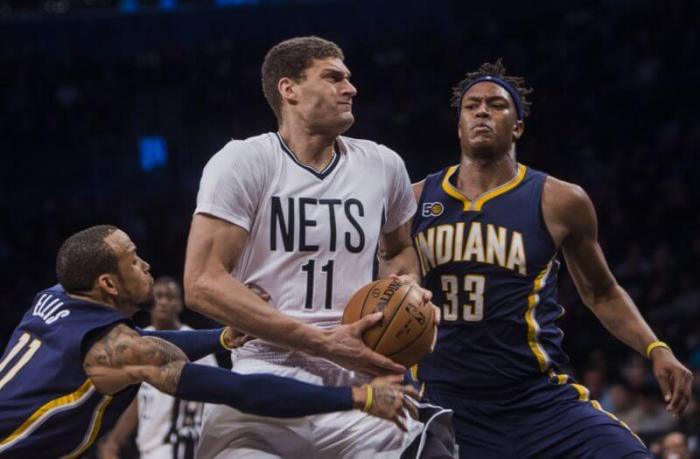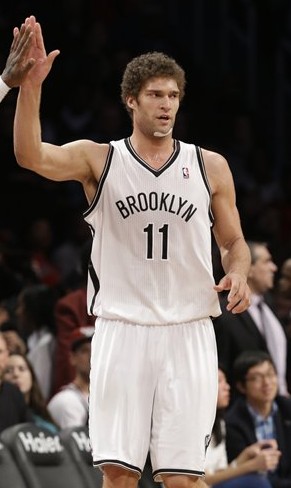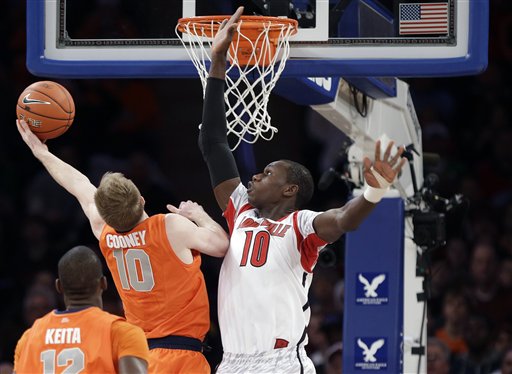
In what has been a vast array of darkness surrounding this Nets season thus far, there has been one, shining, flickering beacon of hope and that is rookie MarShon Brooks. The mere sight of his Marshon rising from the bench and walking to the scorer’s table elicits eruptions from the Nets crowd.
Sure, some of his approval stems from the fact that the Nets (as currently constructed) don’t have lots of potential laden players. Young prospects that carry with them hope for something greater down the line, all-star game appearances perhaps, but to his credit, Marshon in the early going has proven he certainly has the chops to score points in the NBA.
But to breakdown his game fairly, we need to not look just at his point totals, but look deeper at his overall play and most importantly how he can improve. As stated earlier, the book on MarShon coming out of college was that he can score and to no one’s surprise that has proven to be true. And while scoring is certainly valuable, for Marshon to become more of a complete offensive player, I believe he needs to add more to his game.
He’s been one dimensional on offense in the early going, almost to a fault. According to Synergy, almost a third (29.6%) of his offensive possessions are isolations. Some of these are by design, but some are also a result of Marshon stopping the ball during a possession in an attempt to create offense, usually for himself.
Being the ball-handler in pick and roll situations is the next most frequent play that Brooks uses on offense (18.4% of the time). By no means is Marshon developed as a pick and roll by player, but just by executing simple offense I believe he could make himself a more complete player and the Nets a more efficient offensive team in the process.
Take for example a possession from the Celtics game Wednesday night:
In the picture below you will see the Nets giving Marshon Brooks a high ball-screen in the center of the court. The floor is spaced with shooters – Anthony Morrow at the top of the screen, Shawne Williams in the near corner and Jordan Farmar at the near wing.
Taking a look below at the snap-shot of Marshon after he comes off the screen.
Brooks does a nice job getting around the hedger and Johan Petro who was the screener rolls hard towards the front of the rim. Indicated by the red arrow, there appears to be passing lanes (to Petro) or a driving lane for Brooks. Also, Petro’s roll has caused Farmar’s and Williams’ defenders to get stuck in deep in help. Passing to either of them would force their defenders into long closeouts and would give Farmar and Williams opportunities at three-point shots or re-driving past their closing out defender.
So what did Marshon do?
Instead of staying downhill and attacking, Marshon ended up pulling back his dribble which allowed his man (who had been originally caught on Petro’s screen) to get back to him and Petro’s man to recover back on Petro.
Brooks then forced a contested three-point shot and as I circled there was still six seconds on the shot clock, so this was not a desperation attempt and there was still time for Brooks to drive and make a play for someone else. As you can also see from the picture, Farmar and Williams are both still relatively open.
The bright spot about all this is that it is still very early in the development of Marshon as a player. He is just about toes deep in the proverbial feet-wetting of his NBA life. But facts are facts – in 163 minutes played this season, Marshon has only five assists. That works out to be one assist per every about 33 minutes played. Compare that to his one FGA per every two minutes and you can see where he has opportunity to grow.
Certainly Marshon’s bread and butter in this league will be his scoring and by all evidence it’s something he can be good at at this level and it’s something the Nets desperately need from him, right now. But, for him to become a more complete guard and possibly an All-Star in this league, I’d like to see Brooks exploring other facets of offense.
Follow – @justindefeo





















